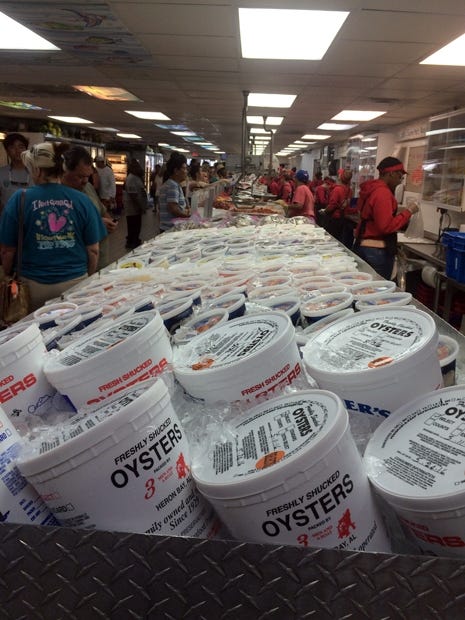![Shucked oysters for sale are pictured. Historically, it was said to eat oysters only in months that contained the letter “R,” meaning September through April. This most likely had to do with the importance of keeping them cold. However, with the advent of ice and the ability to chill, it is safe to eat oysters year-round.
[ LAURA TIU | SPECIAL TO THE NEWS BULLETIN]](http://127.0.0.1/wordpress/wp-content/uploads/2022/01/ghows-DA-5b944925-b359-6dcc-e053-0100007f2d28-3ad90eb2.jpeg)
The eastern oyster is native, commercially and environmentally important to our area. Oysters are a popular food item and are important in maintaining the water quality in our bay and beaches.
While there is not much commercial harvest still in our area, total annual landings for the state of Florida once topped $8 million. Many oysters are now raised using aquaculture and the industry is growing yearly.
Once the East Pass in Destin opened after the 1929 floods, oyster reefs naturally established themselves on oyster mounds discarded by earlier inhabitants. They were regularly harvested for food, but in subsequent years, this has been in steady decline.
Oysters still play a crucial role in the Choctawhatchee Bay, our area’s largest estuary. They filter up to 50 gallons of water per day, which reduces the amount of silt and suspended solids and diligently improves the clarity of the water. They can tolerate a wide range of salinity (saltiness of the water) and provide food and shelter for various other organisms like fish, worms and shrimp. They also reduce shoreline erosion by providing a barrier against waves.
However, oyster habitat, and therefore population numbers, have all declined in recent years. To address this habitat loss, the Choctawhatchee Basin Alliance started a local oyster shell-recycling program. They collect shells from restaurants and, instead of them ending up in the landfill, they are used to construct oyster reef habitat. These “living shorelines” provide habitat for important fish and shrimp species and the structure for live oysters to attach. This program, using a network of volunteers, continues to expand today.
Eating fresh oysters is a delight best savored on the coast. Buying fresh oysters locally, at a seafood shop or restaurant, and keeping them cold is key.
One cup of oysters has 170 calories, 2 grams of fat, 10 grams of carbohydrates and 17 grams of protein. They're also a great source of zinc and omega-3s.
A few myths surround these delectable bivalves, but they have not been proven to be an aphrodisiac or cure a hangover.
One of the most popular myths concerns when to eat oysters. Historically, it was said to eat oysters only in months that contained the letter “R,” meaning September through April. This most likely had to do with the importance of keeping them cold. However, with the advent of ice and the ability to chill, it is safe to eat oysters year-round. Enjoy some oysters today.
Laura Tiu is an agent at the University of Florida's Institute of Food and Agricultural Sciences Extension office in Crestview.


This article originally appeared on Crestview News Bulletin: Oyster biology, ecology and myth busting
